PESTS AND DISEASES OF FORESTRY IN NEW ZEALAND
Declana floccosa, forest semilooper
Scion is the leading provider of forest-related knowledge in New Zealand
Formerly known as the Forest Research Institute, Scion has been a leader in research relating to forest health for over 50 years. The Rotorua-based Crown Research Institute continues to provide science that will protect all forests from damage caused by insect pests, pathogens and weeds. The information presented below arises from these research activities.
Forest and Timber Insects in New Zealand No. 50: Forest semilooper.
Revised 2009
Based on M.K. Kay (1982)
Insect: Declana floccosa Walker (Lepidoptera: Geometridae)
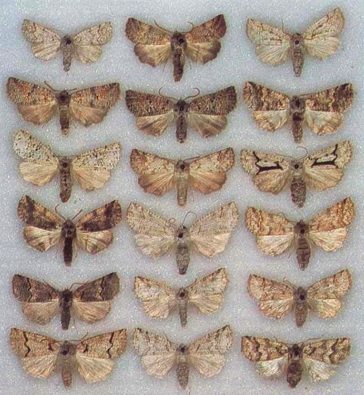
Fig.1 - Adults of the forest semilooper are highly variable in wing colour and patterning. Actual size.
Type of injury
The caterpillar of Declana floccosa eats the foliage of host plants.
Hosts
The caterpillar feeds on a wide range of native and exotic broad-leaved and coniferous shrubs and trees. Exotic hosts include Pinus radiata (radiata pine) and other Pinus species, Pseudotsuga menziesii (Douglas fir), Larix (larch), and Eucalyptus.
Distribution
This native insect occurs throughout New Zealand.
Economic importance
Declana floccosa is common in all New Zealand forests and ranks after two species of Pseudocoremia (Selidosema) as the most frequently encountered looper-type caterpillar on radiata pine and Douglas fir. However, populations are never as high as those of P. suavis (Leaflet No.11) and the insect is of little economic importance. Only one outbreak - on Larix decidua (European larch) at Naseby Forest, Central Otago, in 1958 - has been recorded, but the extent of the damage was not quantified.
Description, life history, and habits
The moth, which has a wingspan of 27-35 mm, is extremely variable in colour and patterning (Fig.1). The forewings are rather narrow for a moth of the family Geometridae and have a ground colour of white or grey. A series of dark-grey, occasionally brown to orange lines or dots cross the wing, and there is usually a more or less distinct jagged line near the base of the wing and another about one-third of the distance in from the tip. Other lines may also be present. The hindwing is white to pale grey, often with two indistinct lines of shading near the middle and a broad dark band at the outer edge. Thorax and abdomen are stout and generally the same colour as the wings. The tip of the abdomen usually has a tuft of white hairs, and the underside of the thorax is densely covered with long white hairs. The antennae of the male are comb-like while those of the female are thread-like.
The moth is nocturnal and is attracted to light. During the day it is usually observed at rest on fences and tree trunks where its mottled grey colouring causes it to closely resemble a patch of lichen (Fig.2).
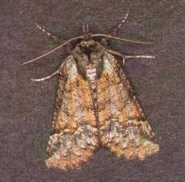
Fig. 2 - Adult of the forest semilooper at rest (x2).
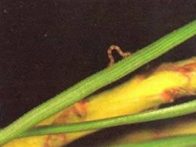
Fig.3 - Young forest semilooper caterpillar on radiata pine (x2.5).
Eggs are laid upright on the foliage of the host plant either singly or slightly attached to each other, and in rows with up to 50 eggs in each row. The eggs, which are oval in shape and slightly narrower at one end, are a bluish green at first but turn to dark brown in a few days and then become reddish brown. They hatch in 10-14 days.
The caterpillar is a semilooper, having three pairs of thoracic legs and three pairs of abdominal "prolegs"; only when it is very young does it arch its body when moving as much as a true looper, which has two pairs of prolegs. There are five instars or larval stages, and colour pattern is as variable as in the moth. The first instar is small, up to 6 mm long, and it is very difficult to see the first pair of prolegs. The caterpillar at this stage is grey to brownish pink with various marbling effects, but is pale red between the body segments and so appears banded (Fig.3). The second instar is similar in colour but the red bands are not so distinct. The third instar has a pair of warts on the upper side of the eighth abdominal segment, and minute soft projections along the sides in line with the base of the legs. The underside of the fourth and fifth instars is flattened, the warts are still present, and the minute soft projections on the sides of the body are now considerably branched. These elaborately-frilled projections disrupt the outline of the caterpillar and help to camouflage it on lichen-encrusted twigs and on foliage. Caterpillars can vary greatly in the amount of body ornamentation, from those with a more or less smooth body, to those of extremely rough form with small bristly warts on most segments. They can be one colour throughout, or elaborately marbled in yellow-green, pale green, pinkish brown, brown and pale green, or black and light grey.
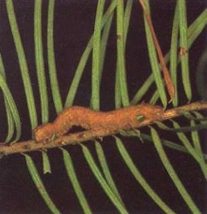
Fig.4 - Fully grown forest semilooper caterpillar on Douglas fir (x1.5).
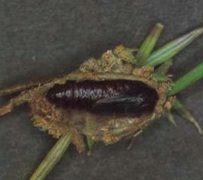
Fig.5 - Loose silk cocoon partly torn open to show pupa of the forest semilooper (x2).
The fully grown caterpillar is 20-30 mm long (Fig. 4) and can reach this stage within four weeks of hatching. It feeds mostly at night and usually rests hidden during the day on twigs or foliage. When fully grown the caterpillar descends to the ground on a silken thread and pupates either on or just inside the litter layer in a loose cocoon usually incorporating dead leaf or needle fragments (Fig.5). Pupation lasts for at least four weeks.
The life cycle of D. floccosa is not well known. Although all life forms may be found throughout the year, evidence from light-trapping of moths and records of caterpillar abundance suggest that there is only one main generation per year.
Control
No control measures have been necessary. Populations are presumably kept in balance by natural agents such as certain parasitic braconid (Aleiodes declanae, Meteorus pulchricornis (Berndt et al. 2006)) and ichneumonid wasps, or by inclement weather. The tachinid fly Pales feredayi (Hutton) is also known to parasitise the caterpillars. If insecticidal treatment were ever required any spray recommended for leaf-eating insects should be suitable.
Bibliography
Berndt, L.A.; Berry, J.A. and Brockerhoff, E.G. 2006: Parasitoids and predators of the endemic defoliator Pseudocoremia suavis (Butler) (Lepidoptera: Geometridae: Ennominae). New Zealand Entomologist 29: 89-98.
Hudson, G.V. 1928: The butterflies and moths of New Zealand. Ferguson and Osborn, Wellington. 386 p.
Kay, M.K. 1982: Declana floccosa Walker (Lepidoptera: Geometridae). Forest semilooper. New Zealand Forest Service, Forest and Timber Insects in New Zealand No. 50.
This information is intended for general interest only. It is not intended to be a substitute for specific specialist advice on any matter and should not be relied on for that purpose. Scion will not be liable for any direct, indirect, incidental, special, consequential or exemplary damages, loss of profits, or any other intangible losses that result from using the information provided on this site.
(Scion is the trading name of the New Zealand Forest Research Institute Limited.)



